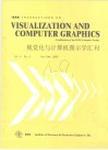版权所有:内蒙古大学图书馆 技术提供:维普资讯• 智图
内蒙古自治区呼和浩特市赛罕区大学西街235号 邮编: 010021

作者机构:TMCC CS Nankai University China State Key Lab of CAD&CG Zhejiang University China Laboratory of Art and Archaeology Image Zhejiang University Ministry of Education China School of Computer Science and Engineering Central South University China Graz University of Technology Austria
出 版 物:《IEEE Transactions on Visualization and Computer Graphics》 (IEEE Trans Visual Comput Graphics)
年 卷 期:2023年第29卷第1期
页 面:310-319页
核心收录:
学科分类:0710[理学-生物学] 0808[工学-电气工程] 08[工学] 0835[工学-软件工程] 0836[工学-生物工程] 0812[工学-计算机科学与技术(可授工学、理学学位)]
基 金:National Natural Science Foundation of China Austrian FFG-COMET-K1 Center Pro2Future (Products and Production Systems of the Future)
摘 要:Horizontal federated learning (HFL) enables distributed clients to train a shared model and keep their data privacy. In training high-quality HFL models, the data heterogeneity among clients is one of the major concerns. However, due to the security issue and the complexity of deep learning models, it is challenging to investigate data heterogeneity across different clients. To address this issue, based on a requirement analysis we developed a visual analytics tool, HetVis, for participating clients to explore data heterogeneity. We identify data heterogeneity through comparing prediction behaviors of the global federated model and the stand-alone model trained with local data. Then, a context-aware clustering of the inconsistent records is done, to provide a summary of data heterogeneity. Combining with the proposed comparison techniques, we develop a novel set of visualizations to identify heterogeneity issues in HFL. We designed three case studies to introduce how HetVis can assist client analysts in understanding different types of heterogeneity issues. Expert reviews and a comparative study demonstrate the effectiveness of HetVis. © 2022 IEEE.